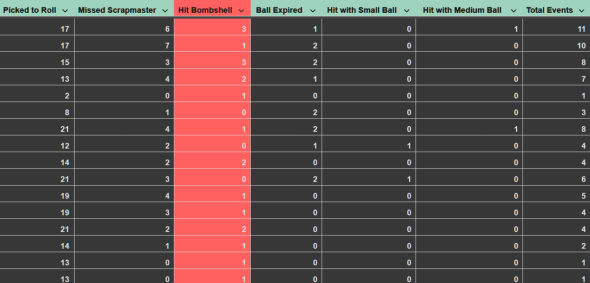The other day, I was chatting with one of the other raid leaders from a different team in our community. We got onto the topic of raid feedback after the raid ends.
Their team uses a system where they post individual debrief threads in Discord sorted by date. People dig into logs, break down their performance, and share what they’ve learned or where they messed up. It’s super detailed, and honestly, it works for them. Especially for the log-savvy folks who live in Warcraft Logs and can extract key information from a night.
Our approach in Last Call is a little different.
We keep it mostly team-focused. When we review fights, we share insights with the whole squad. Once in a while, if there’s something that needs to be addressed, such as a key mechanic someone consistently missed, we’ll mention it if it’s a learning point for everyone. We don’t want to turn our review into a firing squad. The point isn’t to shame people on their class rotation or anything. If I missed one Ancestral Swiftness, that’s not really going to move the needle (but I’m still going to file that information away because I could’ve played that Shaman better).
It’s to improve as a group.
Debriefing After Stix: A Real Example
Let me give you a recent case. We were working on Stix, and during our post-raid breakdown, we pulled a bunch of things out of the logs:
- Defensive cooldown usage: Who popped a defensive when they were supposed to? Who forgot? Who panicked and overlapped three cooldowns on the same hit?
- Trash ball behaviour: Did players avoid the crab shells? Did they accidentally miss a Scrapmaster and turn into a small ball instead of a medium or large one? Every little bit of damage helps on Stix, and that includes how well you manage those ball mechanics.
- Interrupts: This is huge. Did we have full coverage on Scrapmasters?
Even on wipes, every pull gives you data. And the more you learn from that data, the faster you kill the boss. We shared a table with player information that showed who missed Scrapmasters or rolled into Bombshells. In this situation, we had to spotlight players who were making errors. Either they weren’t seeing information, or they weren’t responding to it and these are both things we have to correct one by one. Over time, the team did improve as a whole, and the number of mistakes went down as everyone became more familiar with what to look for and what to avoid. Without having waded into the weeds of the information, we would not have realized that the Scrapmaster in the Purple Diamond section (the one near the wall) was the one that frequently got overlooked.
Our coaching point then was if you are assigned diamond, specifically look for the Scrapmaster that’s near the wall because chances are you balled right by it or it happens to blend in with the wall that it’s just missed.

The Debrief Toolkit: What We Look For
Here’s what we usually include in our team debriefs:
- Positioning: Anyone consistently getting hit by frontals or mechanics they should’ve dodged?
- Cooldown assignments: Were healing CDs used where they were planned? Were any wasted? Was anyone holding a CD too long out of fear? The flipside holds true as maybe we used a raid wide ability somewhere that didn’t warrant it.
- DPS optimization: Were people using potions and cooldowns on time? Did they get value out of their major windows? Are they targeting the right ads including Scrapmasters?
- Death analysis: Were deaths avoidable? Did they come from mechanics, poor healing coverage, or missed externals?
You don’t have to go full detective mode. Even picking two or three key points per night can make a big difference.
Tools We Use
- Warcraft Logs: The core of any good debrief. Parses, cooldown usage, deaths, damage taken—you name it.
- Viscerio’s Combat Replay: Great for showing positional data and understanding how the raid moved during a fight.
- Method Raid Tools Logs: Super helpful for tracking planned cooldowns vs. actual usage.
- Warcraft Recorder: This one’s a game-changer if you’re not already using it. It captures in-game footage automatically, making it easy to review exact moments, callouts, and spatial awareness issues. Bonus: It’s great for training, clip sharing, or spotting issues that don’t show up in logs.
Tone Matters More Than You Think
If there’s one thing I’ve learned as a raid leader, it’s that tone makes or breaks your debriefs.
You could have the most accurate breakdown in the world, but if it comes across like a scolding session, no one’s going to internalize it. Worse, they’ll tune out or even resent it.
We try to keep things constructive. We highlight the good stuff. “Great use of Pain Suppression on that 2nd phase soak.” “We handled the adds way better this pull.” Stuff like that. Wins get celebrated just as much as fails get analyzed.
Final Thoughts
A raid doesn’t end when the boss dies or wipes your raid group. It ends when you understand why it went the way it did.
Debriefs help bridge the gap between one raid night and the next. They’re how you carry lessons forward. And the better your team reviews together, the stronger you’ll be on the next pull.
Start small. Pick one fight. Pick one thing. Talk about it. You might be surprised how much smoother your next raid night goes.